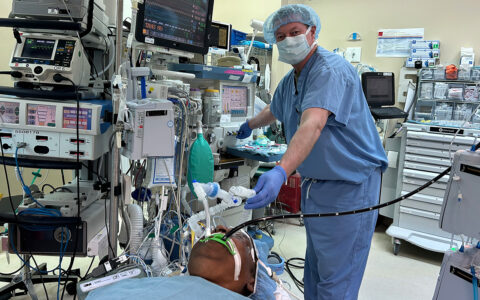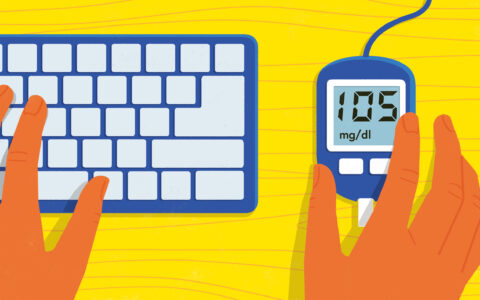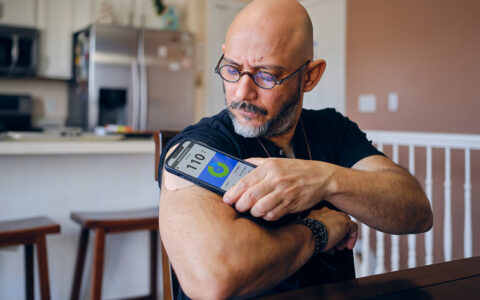The surge in telemedicine during the COVID-19 crisis has offered further evidence that online visits are a highly effective model for endocrinology, says Michelle Griffith, M.D., diabetes telemedicine program leader and medical director of telehealth ambulatory services at Vanderbilt University Medical Center.
The chronic nature of endocrine disease and the need to regularly monitor data make frequent patient contact important while in-person contact is less essential, Griffith said. Devices already gather much of the data needed to monitor patients’ health. Video communication allows the human connection needed to review a patient’s numbers, adjust medications and reinforce healthy behaviors.
“For the patients, there are the obvious advantages of not having to travel to a visit. For the providers, we can work more efficiently and flexibly with our schedules and our EHRs, and perhaps see a few more patients than we would in person,” Griffith said.
“We can work more efficiently and flexibly with our schedules and our EHRs.”
Tested by Crisis
Vanderbilt had been growing its telemedicine capabilities rapidly before the COVID-19 pandemic, increasing video visits from 5,800 in 2018 to 8,400 in 2019. In the past two-and-a-half months alone, the total has skyrocketed to over 100,000, Griffith said. Endocrinology telemedicine visits went from around 120 in 2019 to over 4,500 by June 2020.
Griffith credits her team’s success through the COVID-19 surge to having a well-defined process that begins with properly frontloading information. For diabetic patients, medical assistants perform a virtual intake in advance, with patients reporting their weight and additional vitals. Additional patient information can be gathered remotely from devices, such as insulin pumps and continuous glucose monitors.
“We already have the capacity for most of their devices to download the data for review from home instead of physically plugging them into a computer, as we would do in the clinic,” Griffith said.
As COVID-19 curtailed normal clinic operations, a group of Vanderbilt medical students assisted with setting patients up to use telemedicine. They also created training materials so that staff can continue helping patients get online in the future.
Telemedicine’s Place Secured
For Vanderbilt’s rural patients in Tennessee, there are clear benefits to no longer needing to visit a remote clinic to communicate with the main campus. From the provider’s standpoint, Griffith said controlling appointment times is easier without traffic, parking and other variables that can wreak havoc on schedules. She allocates the same time for appointments but experiences fewer interruptions.
She also finds that telemedicine can be more personal than an in-person visit. “We have better eye contact, for one thing. Before, I had to sit at an angle to the patient to look at the EHR. Now, their record is on the screen and I float their video image right above it.”
“The convenience factor for patients may be great enough that they ‘vote’ for telemedicine when requesting most of their regular appointments.”
“We have learned several things that will influence our future practice,” Griffith added. ”First, the convenience factor for patients may be great enough that they ‘vote’ for telemedicine when requesting most of their regular appointments. Second, during flu season it might be wise for us to recommend telemedicine when possible so our patients avoid the doctor’s office. And lastly, payers that have become more permissive during this time should find that we all made it work without overutilization and continue to expand payment for telemedicine.”




